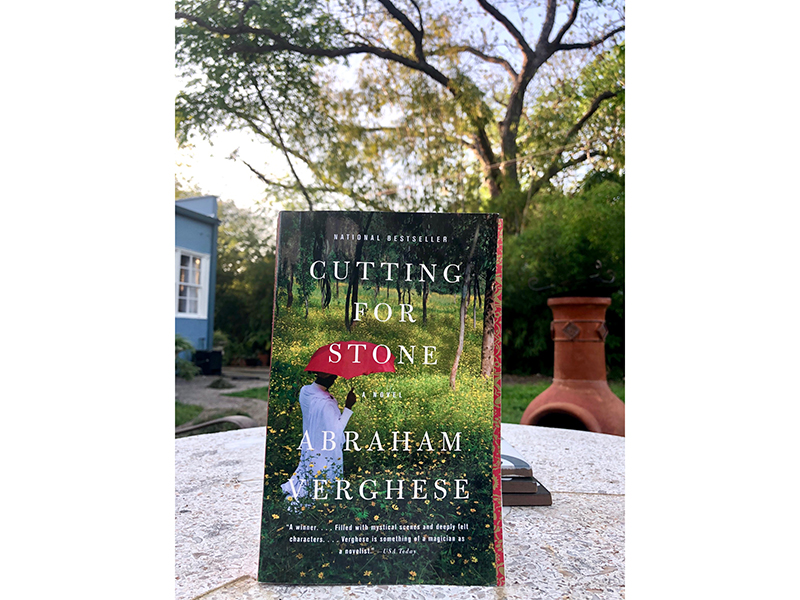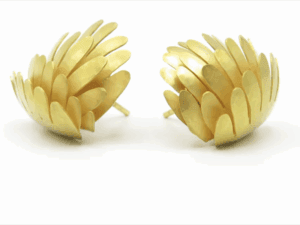No words can describe the emotions that people have been feeling as a result of the coronavirus pandemic. All over the world, we’re in some form of lockdown. What happens when you’re suddenly unable to go to communal spaces? How do you disconnect, relax, and recharge in these stressful times? Are you watching movies or shows? Talking more with loved ones on the phone? Doing yoga? Taking online craft classes? Baking? Burying yourself in books? It may be that you’re in crisis mode, and the only thing you can do is attend to this emergency. That’s definitely something we can all relate to.
Many organizations are offering up reading lists to inspire escape, even momentarily, through a good book. We thought we would do the same. Here’s a list of books that AJF’s board, board emeriti, and staff are currently immersed in, in no particular order.
Tanel Veenre, board member
I started to read The Lit-Up Burrow: Sanatorium Journal, by Max Blecher (1909–1938), during my trip to Moscow, some weeks ago. It’s a sublime diary of a Romanian writer who was diagnosed with spinal tuberculosis and was confined to his bed. This book begins with the phrase, “Everything I write was once real life,” but Blecher’s “real life” is a merging of surreal visions and detailed anatomical pain of sick ones—both himself and others in the sanatorium. Art is usually smarter than I am—so I started this book way before coronavirus hit us and we all became hostages of fear.
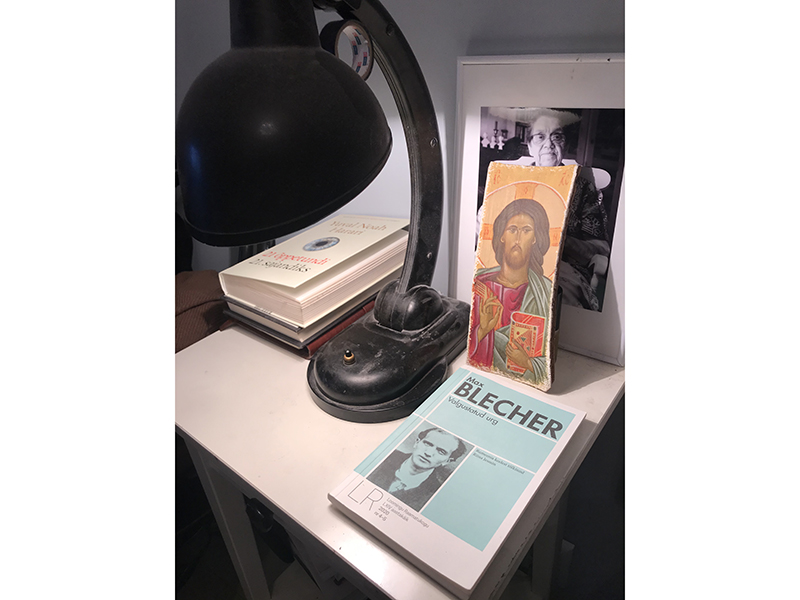
Sarah Turner, treasurer
I’m reading—or rather, dipping in and out of—two books. The first, Women Rowing North, I’ve wanted to read since I heard Mary Pipher, its author, interviewed by Terry Gross. I’m reading it with my 82-year-old mom in mind, a woman of great intellect, character, and heart, and yet confronted with changes in herself and her identity as she ages. Of course, this is all of our futures (if we’re lucky), so I’m reading it with my future self in mind, too. Honestly, it’s fairly depressing and so I dip in and out. Mom was a great fan of Pipher’s book Reviving Ophelia, which is a nice link. And the author lives in Lincoln, NE, USA, my mom’s town. Small world, big ideas.
The second book, Dogtown, by Elyssa East, I’m reading on the recommendation of the Locksmithing faculty member at school. She suggested it as a way to learn more about my new environs, New England, and she knew of my interest in the woods and all that they hold.
Both books are from the Boston Public Library, which I love. To me, nothing says “this is where I live now” like having a library card.

Bonnie Levine, secretary and chair of the Award and Grant Committee
I’m looking to escape and get away from the news feed, newspaper, and TV news shows—unfortunately I’m obsessed with that these days. My next book will be Outwitting History, by Aaron Lansky. It’s a true story of the author’s quest to save a generation of Jewish literature—Yiddish books—that no one wanted and were being discarded or destroyed. He went on a worldwide mission to collect these books that told important stories about Jewish refugees and the worlds they inhabited. His project saved over 1.5 million volumes that are now housed at the Yiddish Book Center, in Amherst, MA, USA. I’m looking forward to digging into history as a way to escape the present!
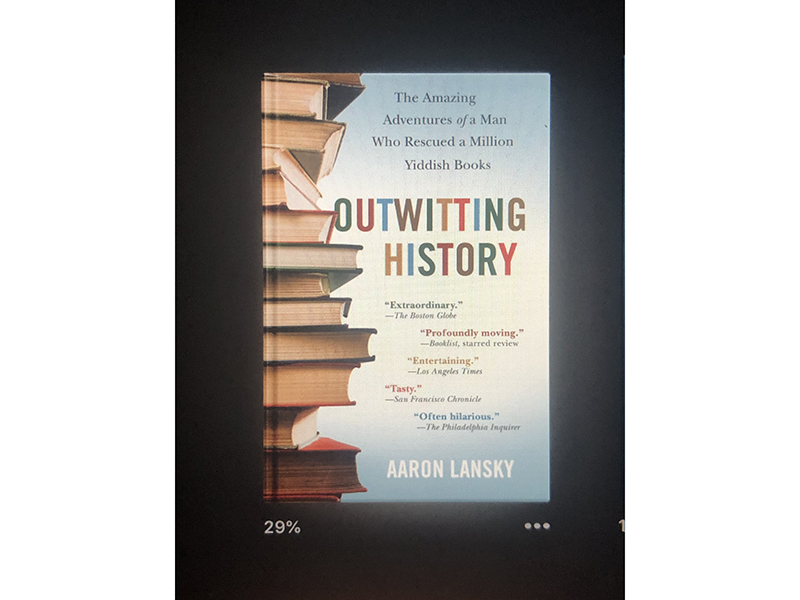
John Rose, chair of the Marketing Committee
Crafting Dissent, edited by Hinda Mandell, is a terrific collection of essays on using art and craft as a means of dissent. Weaponizing art has always resonated with me, and is a technique I have used frequently throughout my career. I first became aware of the concept from an account of working-class women during the French Revolution who took to tying a piece of red yarn closely around their necks as a reminder to the upper class what awaited them.
Reading this book is a bit like sitting around the kitchen table with co-conspirators comparing notes. It is not a picture book; rather, the essays are about the “how” and “why” of using art as protest. The essays focus on yarn and knitting as the medium of choice for protest projects, and while those are not my medium, it delightfully brings me full circle back to where I first came upon these ideas.
The pulp fiction-looking cover and title of The Brothel of Pompeii, by Sarah Levin-Richardson, belie a deeply researched academic archaeological study of the only known purpose-built Roman brothel ever discovered. First excavated in 1862, the building and its contents have received scant attention since. This 2019 study presents a meticulous analysis of the building and its contents to present the first ever picture of the daily life of the people who worked in and frequented the brothel. The presentation is a skillful and engaging analysis of the archaeological record to explore class, status, gender, and sex in the underworld of Roman society.
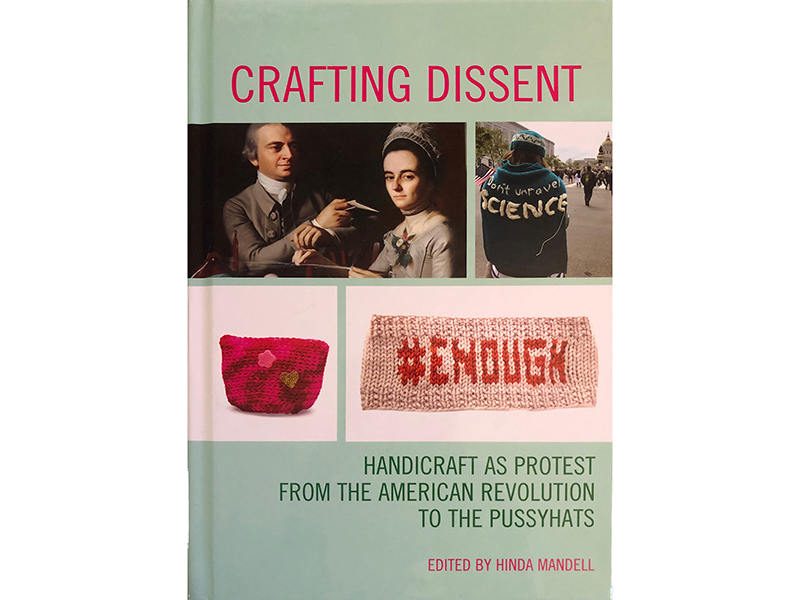
Susan Cummins, founder and board member
I finished reading Say Nothing—A True Story of Murder and Memory in Northern Ireland, by Patrick Radden Keefe, a couple of weeks ago, and it is still with me. It is about Northern Ireland, the IRA, and the Catholic vs Protestant vs British struggle. It is an extremely well told story of the Troubles and is fascinating and filled with the passion that religiously inspired political movements thrive on. Because it’s history told with all the tension and intrigue of a novel, it becomes a thriller. A deeply dark and horrifying thriller. How will the very young sisters Dolours and Marian Price manage to survive their death sentence and their starvation protest in jail? How did the struggle develop over time? Who are the other major players and what did they believe? Did Gerry Adams betray the cause? Will Jean McConville’s children ever find out what happened to their mother?
The book is largely based on recorded interviews done both in person and from earlier recordings that had been made with a promise that they would never be released until after the interviewees were dead. Many of those the book’s author tried to interview would “Say Nothing.” That was the code. But for those who did the recordings, which were housed in an archive at Boston College and were unfortunately released before their time. This book is the result, and needless to say it is a story of passion, betrayal, loyalty, and fury. There is also a streaming video called I, Dolours, available on Amazon, which adds another layer.
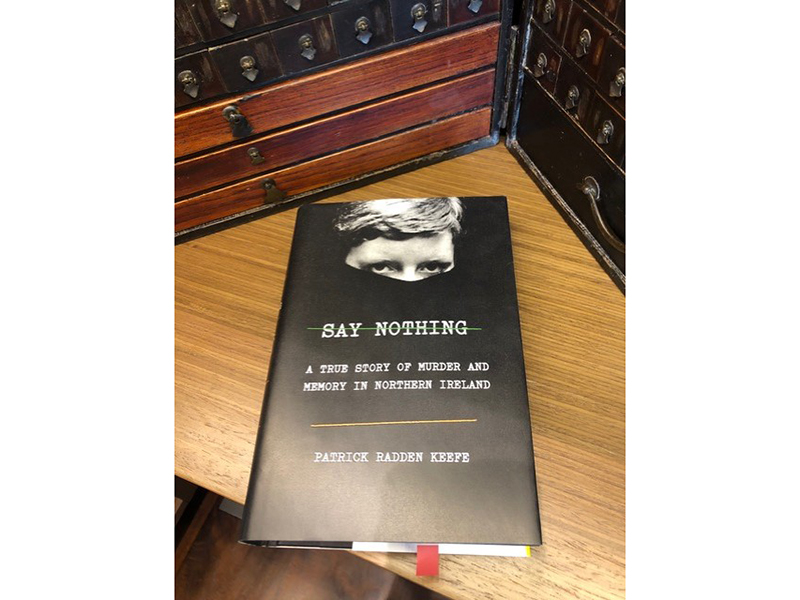
Nathalie Mornu, managing editor
My subscription to the New Yorker gives me such an abundance of reading material that I can barely keep up. Between that and my other media diet, the bleak news these days has kept me from sleeping normally, and I needed something lighter, to take my mind off the unsettling articles. I looked through my own bookshelves and landed on Beards of Our Forefathers and Dapper Caps & Pedal-Copters, two collections of comic strips by David Malki. (I grew up on Tintin and Astérix, and still love graphic novels.) The three- or four-panel strips combine clip art from the Victorian era—the same image in each panel, somehow it works—with truly absurd speech bubbles. The humor is twisted and laugh-out-loud funny. Although the books date from 2008 and 2010, some of the strips could have been written today.
Last week, I received Hunt: Kadri Mälk’s Collection as a gift. What a spectacular book! There’s the tactility of its cover and 400 pages, the unusual trim size, and the gorgeous photography, just for a start. I love Mälk’s work, and find it fascinating to see what jewelry she finds important and worthy to own. Her collection is shown two ways: first, photographed formally, on white seamless paper; then across from that photo, a less formal portrait of one of Mälk’s friends, family, students, and colleagues (as well as others) wearing/presenting the same piece. The models all selected the piece(s) they desired to be photographed with. For me it becomes a little bit like reading a gossip rag, very fun and engaging: Look at that clever photo with Jaanus Samma tossing a necklace! Oh, so that’s what Nils Hint looks like! Wow, I’ve never seen that piece by Bettina Speckner. Hey, I recognize that guy: that’s Charon Kratzen! Oooh, look at that beautiful piece of jewelry! Interesting, I wonder what drew Julia Maria Künnap to choose to model this brooch by Piret Hirv? And who is this Linnar Priimägi, posing in this gorgeous all-white photo? (There’s an index explanation at the back of the book, but I also go down the Google rabbit hole…) With all this time spent reacting to nearly every photo, I haven’t even gotten to the essays at the back yet.

Sienna Patti, board chair emeritus|
My husband got me New York: Club Kids recently—signed by author Walt Cassidy for me. I cried a little when he gave it to me. The book chronicles a time in NYC when I lived there and includes people we knew, clubs we went to, clothes we wore. The images are great and really go a long way to capturing the feeling of that time in the city, with all of its hazy nights and too-bright days. Gender fluidity and fashion reigned. Wigs! Fleuvogs! House of Field! Jackie 60! I just finished reading it cover to cover and loved it. Cassidy looks back and manages to tell the story with a lot of reflection and positivity without sounding too analytical—appropriate for the content. Reading it and thinking back, I feel pretty lucky—both to have lived it and survived it.
I ordered Private Domain, by Paul Taylor, second-hand after listening to a fantastic podcast from Jacob’s Pillow with interviews from Paul Taylor. Now, granted, I am a big dance fan, so the historical parts are super interesting—and I come to it with some knowledge. I think it stands on its own, though, as it is written with an authenticity and humor that is quite generous. It is the autobiography of the famous dancer and choreographer Paul Taylor, but is really a story of passion, desire, independence, and creativity. I’m not finished with it yet—but so far it is one of the best autobiographies I have read.
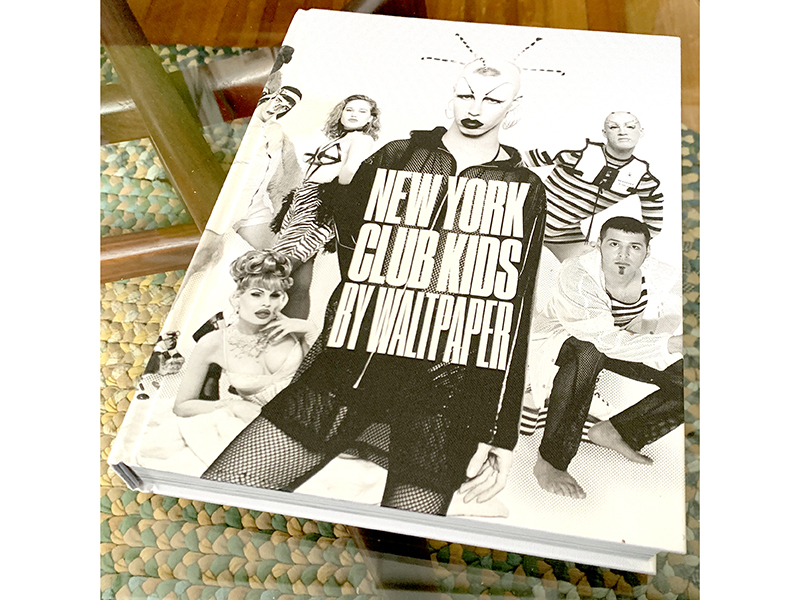
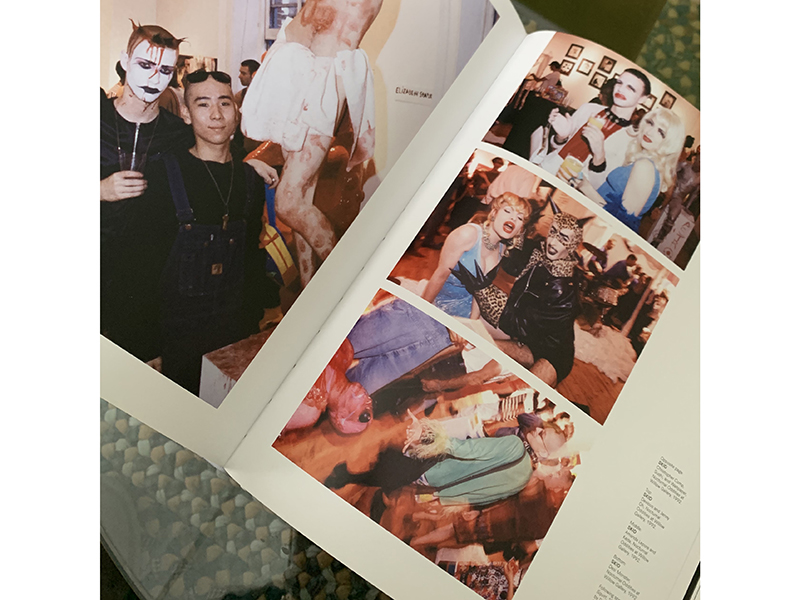
Emily Cobb, board member
One of my favorite exhibitions at Munich Jewelry Week last year was Lin Cheung’s A Work in Progress, at Micheko Galerie. I felt lucky to meet Lin and pick up this signed copy of the artist’s own publication, Tomfoolery: Objects and Jewellery. I spent a good portion of my 14-hour plane ride home to California reading through Lin’s projects, described mostly through unedited emails, letters, and jottings (in addition to many, many images). I found the artist’s informal method for describing the projects refreshing, approachable, and personal. I highly recommend this book to educators, artists, and enthusiasts alike who want a unique insight into Lin Cheung’s artistic practice.
I decided to revisit this publication after hearing about the cancellation of Schmuck 2020 at the Internationale Handwerksmesse in Munich this year. Whether this decision was to help quench my nostalgia for Munich Jewelry Week or simply to serve as an escape during this unprecedented time, I headed to my bookshelf and pulled it out. Lin’s showcard fell out. I tucked it back inside to function as my bookmark and to keep as a time capsule of a very different March, just one year ago…

Bella Neyman, chair of the Events and Lectures Committee
I normally do not have much time to read so this has been a welcoming respite. Even now I am adjusting to all of this newness and am not really in the reading mood. I normally read nonfiction but recently started reading The Goldfinch, by Donna Tartt. It proved to be a bit too dark for these unprecedented times and not really distracting. However, several months ago, my best friend and business partner gave me this book to read called The Four Agreements, by Don Miguel Ruiz. I don’t consider myself a spiritual person and am too skeptical for self-help books, so normally I would never read this, but given the circumstances I decided to give it a try.
This book is based on the teachings of the Toltec or a group of wise scientists and artists living in ancient times in South Mexico. I am still reading it, but the four agreements—be impeccable with your word, don’t take anything personally, don’t make assumptions, and always do your best—really resonated with me. Although I do not think this book is particularly well written, there is a lot of truth to the ideas put forth in it. My favorite one: find your voice to ask for what you want. I figured that in this time of isolation from the world at large, it’s as good a time as any to look within and think about how we want to project ourselves and how we want to be perceived once we are allowed to rejoin society.
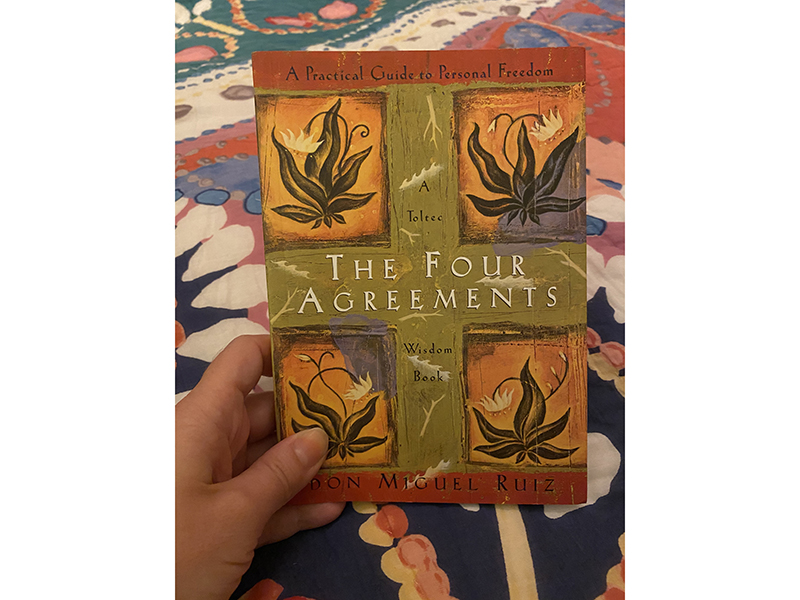
Alejandra Salinas, outreach assistant
I am currently reading The Complete Metalsmith, by Tim McCreight, a great resource as I am setting up my home studio and am trying to figure out ventilation and a studio layout. Also learning more about color by reading The Secret Lives of Color, by Kassia St. Clair, while working on the exercises from Interaction of Color, by Josef Albers. Together they balance each other out nicely as they give very different but fascinating color information.
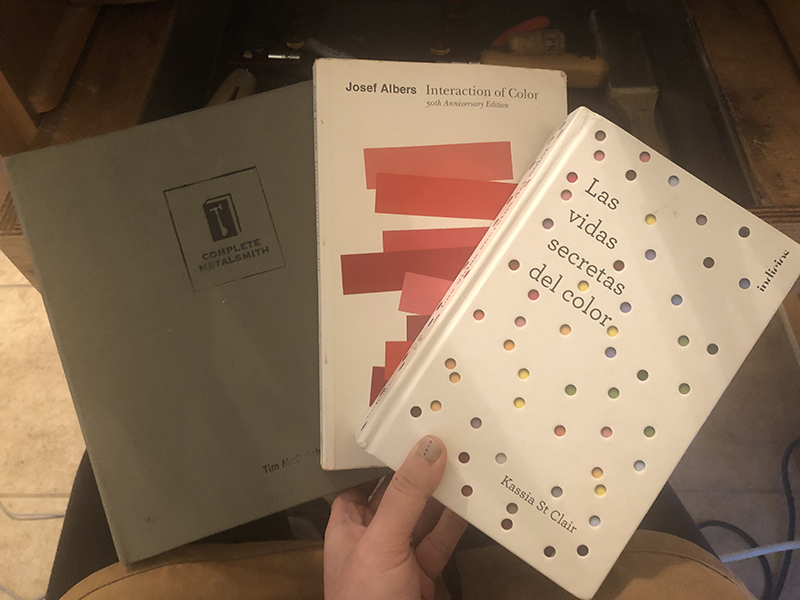
Raïssa Bump, board chair
This is Water, by David Foster Wallace. As a creative solopreneur, for years I’ve lived my life with many unknowns. I’m proactive, creative, engaged, and resourceful. Useful in times like this! That being said, I’ve not settled into a rhythm these past couple of weeks; there are deeper unknowns than ever felt before, and reading for pleasure hasn’t been at the forefront of my days. And yet I came back to this fast read (all of 15 minutes or so)—a commencement speech from 1995 that is humbling, funny, intelligent. I’ve read it many times before. There’s always something in it to reflect on/help contribute to an understanding of a current moment in time. Foster Wallace reminds me to pay attention to what is going on in front of me rather than only what’s chattering in my head. He reminds me that I have agency, options on how and what I pay attention to and think. This of course comes with the challenging task of being conscious and not letting default settings rule. Something I found powerful and useful in challenging times like right now.
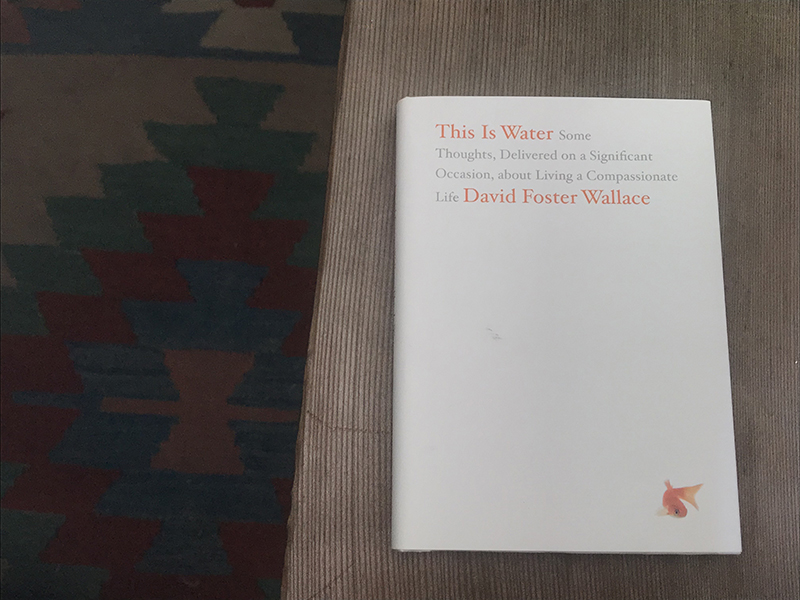
Sofia Björkman, Gallery PLATINA in Stockholm, board member
Normally I read several books at the same time, although lately I only have had time for emails and news. Anyway, two books I have by my side are these. The first is a new edition of two of Sweden’s foremost goldsmiths and jewelry artists, Margareth Sandström and Peter De Wit, who have worked together since the early 70s. The book is more visual reading than words, and I look forward to sinking into the exclusive production these unique artists have left behind. The second book, Beyond Nature and Culture, by Philippe Descola, I have already read, but it is always in my book pile as I return to it often and read again and again to understand the world we are living in.

Marta Costa Reis, board member
I am currently reading The Cartiers, by Francesca Cartier Brickell. The book is not so much about the jewelry but about the family behind it. Although today most of my reading is about jewelry to prepare for classes, this is a bit of distraction reading. I love biographies and the way history is told from a very personal point of view… certainly biased but always interesting. This book also tells the story of the creation of modern life and of the 20th century, told from the stores in Paris, London, and New York, or the sales trips to India and Russia. Fascinating characters cross the lives of the family, many of them inspiring historical jewels, like the ring created with Jean Cocteau, to name just one. Cartier is for me one the most incredible jewelry houses, and although my interest lies mainly with contemporary art jewelry I am very much enjoying this book and the family story.
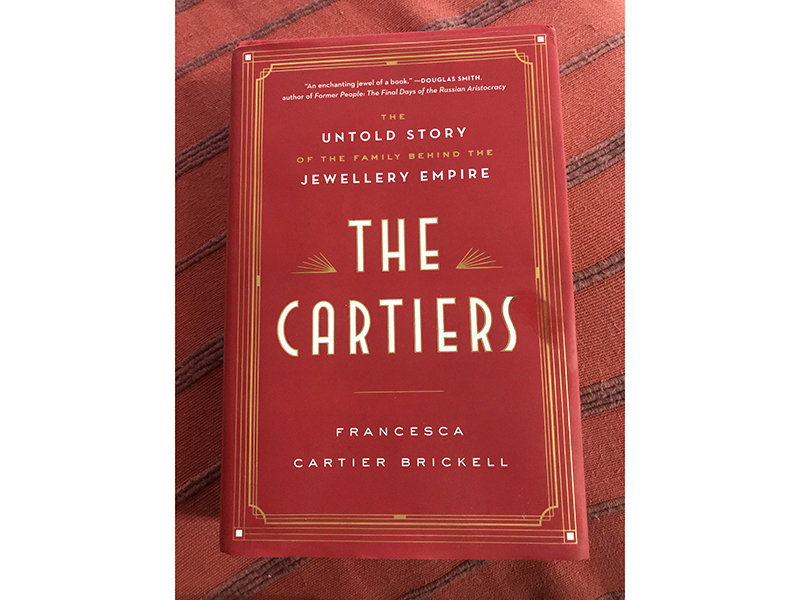
Yvonne Montoya, executive director
I started a couple of weeks ago, with great enthusiasm, Cutting For Stone, by Abraham Verghese. A good friend of mine recommended it. She said, “It’s a story about everyday miracles and you’ll get so wrapped up in it you’ll forget what else is happening around you.” Perfect, I thought! I cringed when it arrived—667 pages! For some time, I’ve been reading articles, the news, and work-related materials. But the weather has been cool and sunny, and sitting outside with my book under a canopy of trees, listening to the birds chirping (they are not under lockdown), has become my favorite way to unwind. The story moves around between India, Ethiopia, and New York and tells of twin brothers born of a secret union between an Indian nun who’s a nurse and a British surgeon. The nun has just given birth… you’ll have to email me to find out what happens next or how it ends!
